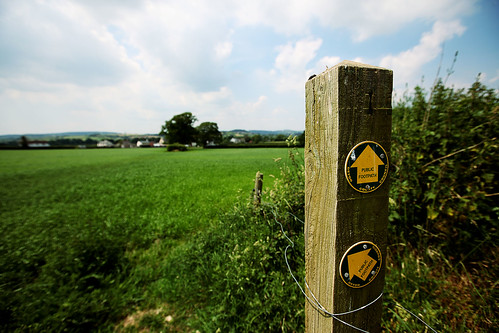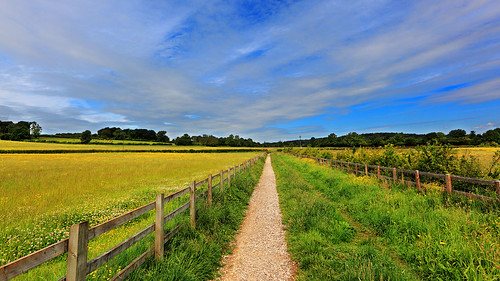

| Archive Blog Cast Forum RSS Books! Poll Results About Search Fan Art Podcast More Stuff Random |
|
Classic comic reruns every day
|
1 {photo of a person walking along a mountain path}
1 Caption: Wanderlust
|
First (1) | Previous (3311) | Next (3313) || Latest Rerun (2895) |
Latest New (5380) First 5 | Previous 5 | Next 5 | Latest 5 Annotations theme: First | Previous | Next | Latest || First 5 | Previous 5 | Next 5 | Latest 5 This strip's permanent URL: http://www.irregularwebcomic.net/3312.html
Annotations off: turn on
Annotations on: turn off
|
 Sydney Fish Market, Pyrmont. |
The problem was that the overseas attendees didn't know where else to go. In contrast, I walked a few blocks in various directions each day. One day I had lunch in a good, inexpensive Thai restaurant in the vibrant and eclectic Pyrmont district. The next day I walked a little further to the Sydney Fish Market, where fishing boats bring in the day's catch before dawn and the fish are auctioned to restaurants and retailers. I got a banquet of freshly grilled mixed seafood and chips, enjoying it at a table overlooking the trawlers in the bay, with the squawks of gulls squabbling over other people's leftovers. Another day I had a Greek lamb burger at one of my favourite burger places in the city. And in a different direction lies Sydney's Chinatown, with a wide variety of excellent food.
During the long lunches I also had time to walk around to see and do various things. I knew where the good book shops and game shops were, I knew the scenic route to get there. And I knew the nearby Australian Maritime Museum had a visiting exhibition on Vikings and, berthed behind the museum building but free to access, was a replica longship based on a 700 year old burial ship. I got some nice photos, which most of the visitors to Sydney for the conference would not have realised were there for the taking.
 Viking longship replica, HM Bark Endeavour replica, and HMAS Vampire, Australian National Maritime Museum. |
One particular example of this, as alluded to already, is food. The food outlets that cluster around tourist attractions tend to have a suite of less-than-desirable characteristics: lower quality, fatty or sugary, pre-prepared, and overly expensive for what you're getting. Ideally you'd want something which is better quality, more authentically representative of the culture you're in, freshly made, and priced appropriately without the "tourist mark-up".
One method of finding such places is to refer to a good travel guide. A good guide doesn't just tell you about the tourist attractions that everyone visits, it will also tell you where to go, away from the main tourist trails, to find authentic local cuisine. Having taken the time to follow their advice on some occasions, I recommend it over randomly choosing some place to eat just because it happens to be right next to a major attraction. You can find good stuff that way, but the odds are better if you're more discriminatory.
The other method is to go wandering. Turn down a side street and walk a few blocks, away from all the other tourists. Find a nondescript restaurant or food stall that is populated by locals. If the menu is only in the native language and not English, that's a good sign. (You'll need to have some comfort either stumbling through the language, or gesturing and pointing, but that' same good thing to have when travelling anyway.) You could end up with a poor meal this way, but it's unlikely to be much worse than what you would have got if you overpaid for fast tourist food, and you're more likely to stumble into something wonderful.
 Rural wandering. I just stopped the car and went for a walk in rural Devon. |
Wandering also brings you to new areas and neighbourhoods that you might not have visited otherwise. This can reveal interesting things that might be far enough down a list of attractions that they don't figure in most tourist guides. Many neighbourhoods have churches, shops, markets, parks, and so on, where you can absorb the local vibe. Buy a piece of fruit from a fruit stall, sit on a park bench, and watch the people walk by as you eat it. Poke your nose down alleyways and into tiny local churches. Take note of any interesting looking restaurants and return when you are hungry. Walk along rivers, canals, or docks and enjoy the scenery.
In some places, wandering could potentially lead you into unsavoury or dangerous areas. Do a little research first and avoid any places which would make you feel uncomfortable. But otherwise, just picks a direction and go. Allow your path to twist and deviate depending on what you see down side streets. Or maybe pick a target to aim for, such as a bus stop or train station which will get you back to your hotel, and wobble towards that.
Wandering like this is best done in city centres, where there are likely to be vibrant and eclectic neighbourhoods in close proximity. If you end up in suburban housing tracts, then features of interest become sparser. But get into more rural areas, and wandering gets interesting again. Many tourist attractions tend to be in cities or town centres, so spending time in the countryside is not something many tourists do. It can be well worth it though.
 The path from Bourton-on-the-water to Lower Slaughter. |
In England I visited the picturesque Cotswolds village of Bourton-on-the-Water. It's nice, if a little touristy. A few kilometres away is the tiny village of Lower Slaughter, which has pretty much nothing except an old mill, a hotel, and a few houses. It's nice to visit too, and we could easily have driven over there for a quick look. Rather than do that, though, we chose to walk. There is a path between the villages that cuts through the middle of fields which were bright with flowers, before plunging into a dark copse of trees watered by a babbling stream. The walk took an hour or so, and for that time the whole world could have been nothing but me, my wife, and this immense field of golden yellow flowers.
On another trip we visited Paris, and wanted to take a day trip to see Monet's house and garden at Giverny. Giverny is a small village and we took the train to the nearest town, Vernon. From here, most tourists crowd on to buses right outside the station. But there is a walking path from Vernon to Giverny. First you walk through the town, which is interesting and picturesque in its own right. Across the River Seine the path begins, following an old dismantled railway line, so it is away from any road traffic. This quiet path follows the river for five kilometres, passing neat cottages and fields, until it delivers you to Giverny. It is a delightful walk, and if you ever find yourself going to Monet's house, I recommend it (though take a good sun hat).
 The path from Vernon to Giverny. |
Another thing I like to do, on road trips or if I've hired a car somewhere away from home, is to find places where I can pull over for a while, and get out and walk around. Sometimes there are specific walks through scenic regions. National parks, in particular, often have these. There are walks to waterfalls, through dense forests, around lakes, over mountains, and along beaches. Often you don't need to go far from the road to get the feeling that you are deep in the wilderness, isolated from everyone else on the planet. It's a wonderful feeling.
By walking you experience so much more of the world than you do from the window of a vehicle, or by just getting out and taking a quick look before zooming off to your next destination. You also get time to breathe, and relax. Rather than thinking about the next destination, your mind is freed to absorb what's around you. Rather than focus on sightseeing, you start to notice sounds, textures, smells, even the feel of the ground beneath your feet or the breeze in the air.
The urge to travel is known as wanderlust. It is a desire to experience new and different places. You can feed wanderlust just with the stereotypical sights that all tourists see, but to really satisfy the hunger you can sample more widely and deeply. Go for a wander. There's a whole world out there to explore.
|
LEGO® is a registered trademark of the LEGO Group of companies,
which does not sponsor, authorise, or endorse this site. This material is presented in accordance with the LEGO® Fair Play Guidelines. |